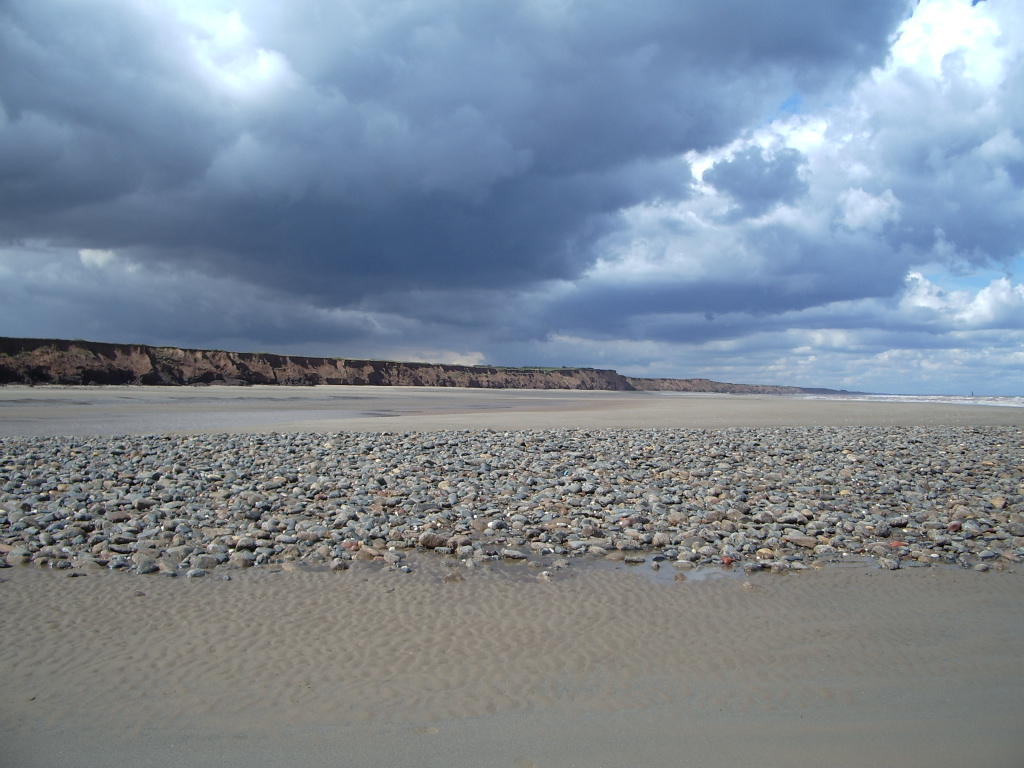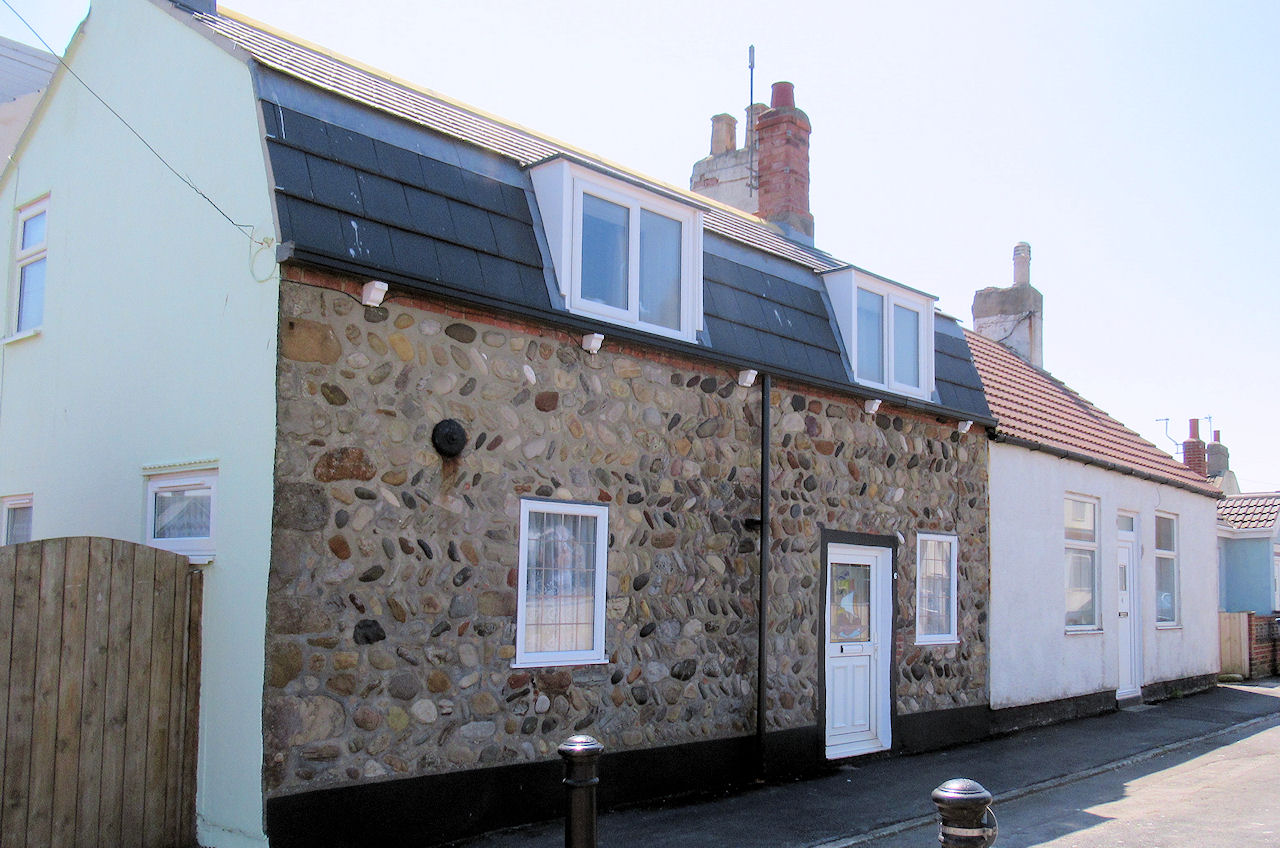CCO Cobbles of Holderness

Site of Monkwith, Tunstall
Holderness is composed of the boulder clay left behind after the ice retreated about 7,000 years ago. Embedded within this clay are many rocks that were brought down by the glaciers. They have been brought from as far away as the North Pennines, Scotland and even Norway. As these rocks are not native to the region, they are called ‘erratics’. The only rock indigenous to this area is chalk, which lies up to fifty metres below the surface of the clay in Holderness.
As the coast erodes, these boulders and cobbles are washed out of the cliffs and deposited on the beach. In the past, a number of coast dwellers collected these cobbles and used them for a variety of purposes. Many found their way into the construction of toll roads, barns, cottages and even churches. Some of the rocks were also used as ballast on outbound ships, being dumped in distant parts when the vessels loaded a paying cargo.
People who engaged in the trade of collecting these cobbles were called ‘cadgers’, and they had to have permission from the Constable family, who owned much of the Holderness shoreline. Donkeys with panniers were often used to transport the rocks off the beach.
In 1867, there were 28 individuals licensed to undertake this work, with as many as seven at Aldbrough and six at neighbouring Cowden.
During the 18th and most of the 19th century, the gravel and cobble trade was big business at Kilnsea and Spurn Point, with up to 50,000 tons a year being collected by keels and taken to the ports on the Humber. This extensive exploitation was a major contributor to the breach that Spurn experienced in 1849. After that date, the collection of gravel on the peninsula declined steadily, eventually finishing in the 1920s.

House built of cobbles on North Gate in Withernasea